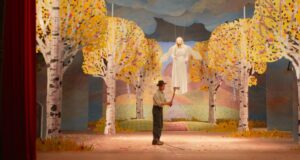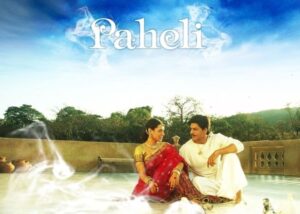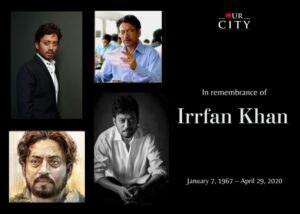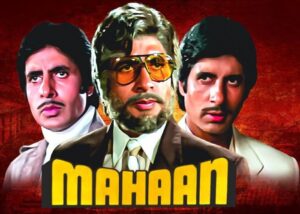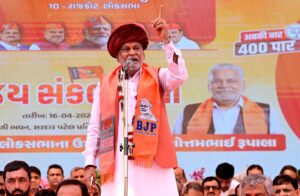– A review written by Shivani Gadre
In the expansive Marvel Cinematic Universe, “The Marvels” emerges as a breathtaking cosmic odyssey. Directed by director Nia DaCosta, the film seamlessly blends action, humor, and heartfelt moments, introducing a formidable trio of superheroines navigating the intricacies of identity, responsibility, and the interconnected nature of their destinies.
“The Marvels” is derived from Marvel Comics and serves as the sequel to the 2019 film “Captain Marvel.” It continues the narrative introduced in the television miniseries “Ms. Marvel” (2022) and is an integral part of Phase Five in the Marvel Cinematic Universe (MCU). “The Marvels” unfolds as a visual feast, taking audiences through distant corners of the cosmos, each intricately designed with breathtaking visuals. The film’s visual tapestry serves as a testament to the creative brilliance that characterizes the Marvel Cinematic Universe.
“Higher. Further. Faster. Together!”
“The Marvels” revolves around Carol Danvers, alias Captain Marvel (portrayed by Brie Larson). Carol grapples with the consequences of her actions, including destroying the Supreme Intelligence of Hala (as depicted in the Captain Marvel-2019), leading to a civil war among the Kree species and later causing the planet to lose its air, water, and sunlight. She reclaims her identity from the oppressive Kree. Her narrative becomes entwined with two fellow heroes: Kamala Khan, also known as Ms. Marvel, possessing the ability to materialize energy (portrayed by Iman Vellani), and Monica Rambeau, endowed with the power to sense energy (portrayed by Teyonah Parris).
These three superheroines found their paths to be interconnected (and their energies) leading their face-off with Dar-Benn, the new leader of the Kree (portrayed by Zawe Ashton) to save other realms from her destructive ways for saving her own people and planet.
Questions arose in the rewrite and reshoots of “The Marvels”:
The hurried and fragmented storyline of “The Marvels” has left numerous unanswered questions. It raises speculation about whether these uncertainties stem from the original narrative or if they resulted from reshoots and rewrites.
The portrayal of Dar-Benn in Marvel comics significantly diverges from the MCU version. Notably, in the comics, Dar-Benn was depicted as male, whereas the MCU version presents the character as female. This prompts the question of whether the change was made to be more relatable to today’s feminist Gen Z audience.
 Monica Rambeau undergoes an abrupt transformation into Photon in “The Marvels.” While a recurring character in the MCU, Monica has never been portrayed as a superhero until this film. Suddenly gaining the ability to control light energy, her transformation into Photon lacks detailed explanation, giving the impression of a plot device rather than a natural character progression.
Monica Rambeau undergoes an abrupt transformation into Photon in “The Marvels.” While a recurring character in the MCU, Monica has never been portrayed as a superhero until this film. Suddenly gaining the ability to control light energy, her transformation into Photon lacks detailed explanation, giving the impression of a plot device rather than a natural character progression.
The post-credit scenes, with Monica waking up in a reality similar to ours (X-men Universe), do not align with the storyline and seem forced, perhaps just to pave the way for upcoming storylines like Secret Wars.
MCU has lost its charm with the Stan Lee:
Stan Lee, a visionary whose influence played a pivotal role in shaping the Marvel Cinematic Universe into the global phenomenon it is today, is sorely missed since his passing. His undeniable contributions to the MCU are evident, and the franchise has not been the same without his creative input.
Renowned for crafting compelling and relatable characters, as well as infusing humor into serious storylines, Lee’s impact on the MCU resonated with a broad audience. However, his absence has become increasingly noticeable in the recent output of the MCU. Once celebrated for its witty and self-deprecating humor, recent films and television shows have seen a shift toward forced and less effective humor.
In the past, the MCU was characterized by a large cast of well-developed characters, each given the time and space to evolve. Regrettably, recent years have witnessed characters becoming more one-dimensional, with storylines losing the depth and intrigue they once possessed. Despite the continued success of the MCU, the franchise has undergone a noticeable change without Stan Lee’s unique creative touch.
Undoubtedly, Stan Lee’s contributions were significant, and his absence is a considerable loss for the franchise. The question lingers as to whether the MCU can rediscover the magic it once possessed without Lee’s guiding influence.
Contrary to the engaging nature of past MCU movies and TV series, “The Marvels” appears more focused on style than substance. Despite flashy action sequences and visually striking scenes, the film lacks the depth and character development that have been integral to the MCU’s past success.
As a result, the story in “The Marvels” feels strained, featuring implausible plot points and deus ex machina moments that transform it into a hollow spectacle rather than a compelling narrative.







